Grill like a Pro: The Ultimate Guide to Reverse Searing Steaks
Sep 07, 2023 By Cassandra Bailey
Advertisement
When it comes to cooking the perfect steak, there's an art to getting that delectable, restaurant-quality taste. As sous vide cooking gains popularity, more and more home chefs are attempting to determine the ideal technique to prepare a melt-in-your-mouth filet. The reverse sear technique is the best way for cooking a perfect steak. This method entails gently cooking the steak at a moderate temperature before finishing it on a sizzling grill. It's the surest method to get a steak at home that tastes as good as you'd get in a steakhouse.
In this guide, we’ll take you through the step-by-step process of reverse searing a steak on the grill, from understanding the basics to savoring the benefits.
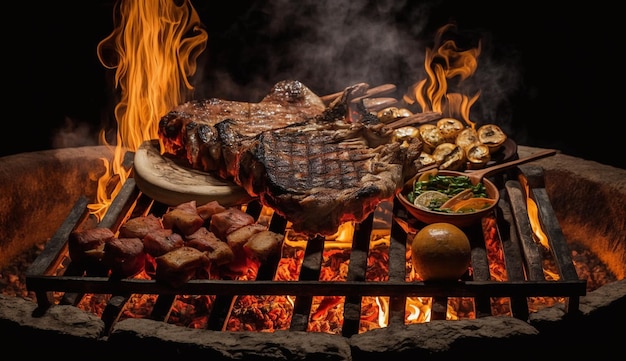
What is the Reverse Sear Technique?
The reverse sear method is an advanced grilling technique that reverses the typical process of cooking a steak. Instead of searing the steak first and then cooking it, you begin by slow-cooking it at a lower temperature before finishing it with a high-heat sear. This approach allows you to have greater control over how the inside of the steak cooks, resulting in a flawlessly uniform medium rare with a gorgeous brown crust.
The Benefits of Reverse Searing a Steak
- Even Cooking: Reverse searing guarantees that your steak is cooked evenly from edge to center. There's no need to be concerned about a burnt outside and a raw inside.
- Precise Doneness: With reverse searing, you have more control over the amount of doneness you want. This approach produces consistent results whether you desire rare, medium-rare, or any other doneness.
- Perfect Crust: The final high-heat sear makes a wonderfully caramelized crust that not only looks amazing but also gives a lovely textural contrast to the soft inside.
- Tenderness: The ensuing softness and juiciness is perhaps the most notable benefits of reverse searing. Slow cooking helps the natural fluids in the meat to spread evenly. Because of this, not only does the steak have a lot of taste, but it's also quite juicy.
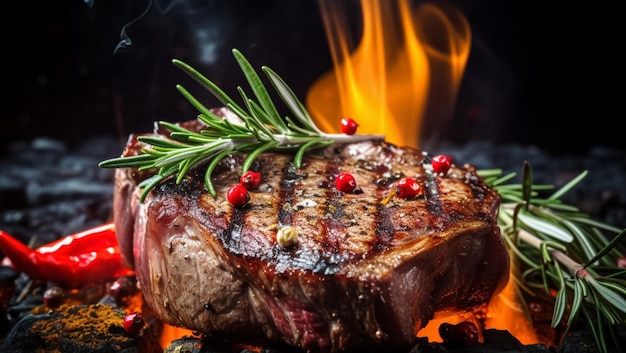
How to Reverse Sear a Steak Perfectly?
- Choose the right steak: Choosing a suitable cut of meat is the cornerstone of a great reverse sear. Steaks at least 1.5’’ thick are recommended for the reverse sear procedure. Choose marbled steaks such as ribeye, New York strip, or filet mignon. The marbling provides taste and softness, all of which are required for a perfect reverse sear.
- Season for Flavor: Season your steak with kosher salt and freshly ground black pepper. This is a simple yet important step that brings out the inherent flavors of the meat. After 30 minutes of resting at room temperature, the salt begins to work its magic, pulling moisture from the surface and then reabsorbing it. When cooked, this technique will make your steak juicier.
- Set up the Grill: For the reverse searing procedure, it is critical to create the ideal grilling atmosphere.
- Two-Zone Fire: Prepare a two-zone fire on your grill for reverse searing. To create a direct and indirect grilling area, one side should be heated to a high temperature while the other should be cooled. Simply switch on the burners on one side of a gas grill while leaving the other burners off.
- Preheat: Preheat your grill to about 225-250°F (107-121°C). For a real smokey taste, add wood bits or charcoal. A tiny handful of wood chips added to the embers may provide a delicious smokiness to your meat.
- Grill the Steak: The magic starts with the slow-cooking phase on the cooler side of the grill.
- Cook Indirect: Place your seasoned steak on the cooler side of the grill. This is when the reverse searing process begins. Close the cover and let it cook to the desired internal temperature. Keep in mind that the thicker the steak, the longer it will take to attain the correct temperature. During this stage, patience is essential.
- Monitor the Temperature: Check the temperature of the steak with a meat thermometer. Aim for a temperature of 130–135°F (54–57°C) for medium-rare. If your piece of meat contains a bone, insert the thermometer into the thickest section of the steak, avoiding contact with the bone. This guarantees a precise reading.
- Sear the steak: Once the steak has reached the temperature you want, transfer it to the hot side of the grill. The high heat will sear the outside, resulting in the desirable crust. Sear each side for 1-2 minutes, or until the desired caramelization is attained. After searing, take the steak from the grill and let it aside for at least 5 minutes. This causes the liquids inside the meat to redistribute, resulting in a juicy steak. During this time, cover it with aluminum foil to help maintain heat.
Ideal Temperature for Reverse-Seared Steak
The ideal internal temperature for your reverse-seared steak depends on your preferred level of doneness. Here are some guidelines:
Doneness | Target Temperature |
Rare | 120-125°F (49-52°C) |
Medium Rare | 130-135°F (54-57°C) |
Medium | 140-145°F (60-63°C) |
Medium Well | 150-155°F (66-68°C) |
Well Done | 160°F (71°C) and above |
These temperatures ensure that you achieve the perfect level of doneness while preserving the steak's natural juices.
The Takeaway
In conclusion, this in-depth guide has revealed all you need to know about reverse searing a steak on the grill, from choosing the appropriate cut to getting it cooked to perfection. This technique is highly preferred by both home cooks and professional chefs because of the exceptional results it produces. Try reverse searing the next time you fire up the grill for a steak that tastes like it came straight from a fine steakhouse.
Advertisement
-
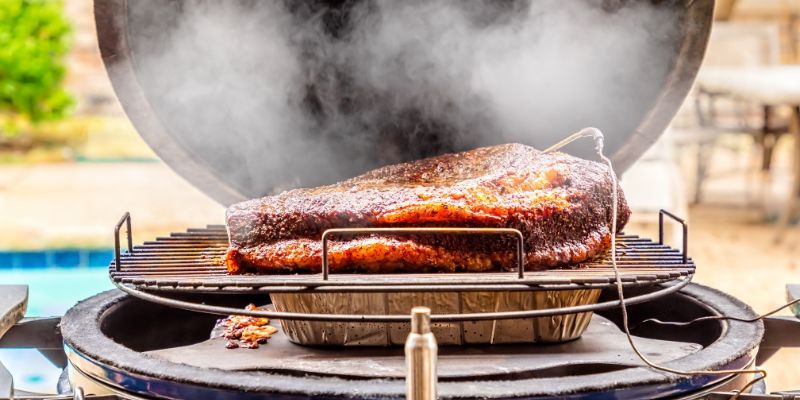 Sep 06, 2023
Sep 06, 2023Fat Side Up or Down: The Best Way To Cook Perfect Brisket
Debating cooking your brisket fat side up or down? Learn how each method impacts moisture, bark, smokiness, and ease of cooking to determine the ideal fat placement.
-
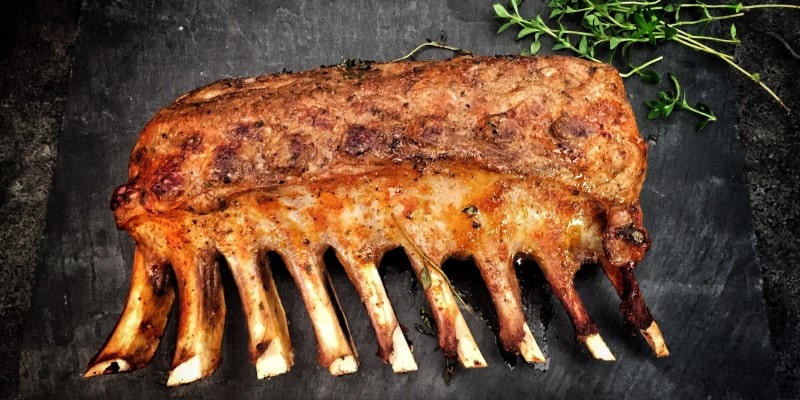 Sep 04, 2023
Sep 04, 2023Mochi is the Secret Ingredient Your BBQ Needs to be Next Level
Unleash the magic of Mochi BBQ and elevate your grilling game with this unique and chewy rice cake.
-
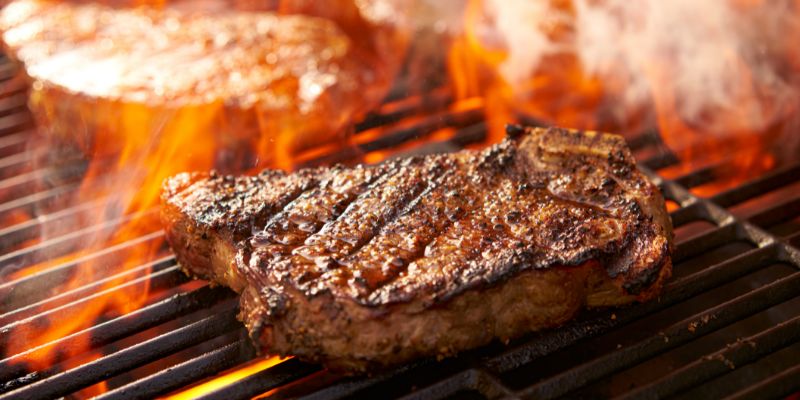 Sep 06, 2023
Sep 06, 2023How To Grill Frozen Steak For Juicy Tender Results
Learn how to season, sear, and finish frozen steaks on the grill for optimal doneness and flavor using indirect heat and a meat thermometer.
-
 Sep 16, 2023
Sep 16, 2023Does Asparagus Make Pee Smell Weird? The Science Behind Asparagus Pee
Do you want to learn why asparagus makes your pee smell weird, how it affects different people, and what you can do about it. This article outlines the facts!
